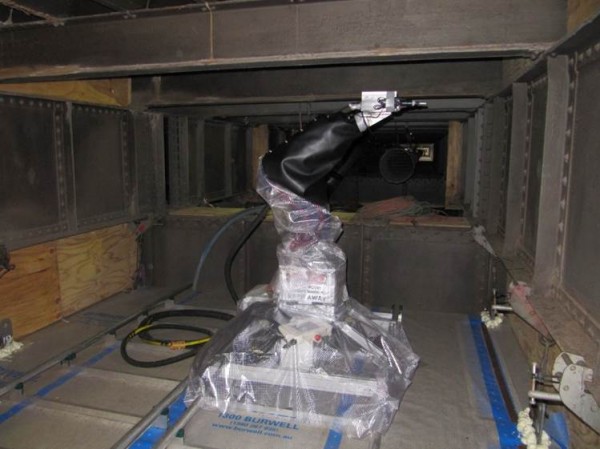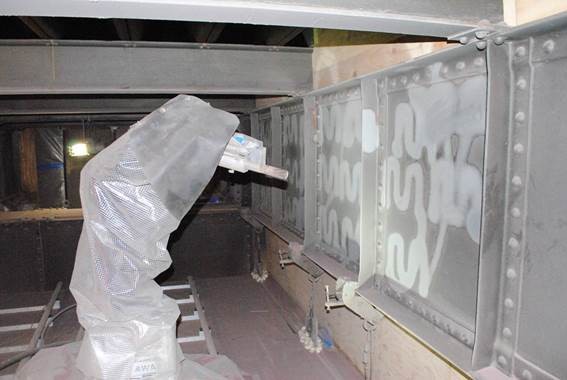
Sandy and Rosie, the Sydney Harbour Bridge robots
Autonomous robots to support maintenance on Sydney Harbour Bridge
Image


Image controls:
Across New South Wales, steel bridges form key infrastructure that supports urban and rural communities. In order to remain functional and to minimise any risk of failure, steel bridges require regular maintenance. A critical element of the maintenance of steel bridges involves heavy duty grit-blasting.
Grit-blasting operations are associated with a range of potential risks. There can be exposure to dust, particulates and hazardous chemicals. In some cases, abrasive blasting processes may generate other hazards associated with noise, heat, vibration, manual handling and working in confined spaces. Additionally, the physical demands of the task can also result in fatigue and low productivity, with subsequent impact on costs to industry and government.
With safety considerations first and foremost, Roads and Maritime Services (RMS) approached the University of Technology Sydney (UTS) to seek a solution that would minimise workers’ exposure to the hazardous side of maintaining steel bridges. Finding a safer solution is paramount with the RMS vision “to create a workplace where everyone goes home safe and healthy every day”.
Since 2005, researchers from the Centre for Autonomous Systems at UTS and staff from RMS have joined forces on the research and development of a world-first autonomous grit-blasting robot for steel bridge maintenance and rehabilitation. This research was pioneering as such a robot was unlike others used in grit-blasting, as it required the robot to operate in an unfamiliar and unstructured environment.
The aim of the UTS Centre for Autonomous Systems is to build intelligent and autonomous machines that can operate in difficult and unknown environments. As a leader in the robotics field, the Centre was well placed to address the challenge of creating a robot capable of scanning a complex environment in real-time without the intervention of a human, and then use this information to plan and carry out grid-blasting of the structure.
RMS contracted the UTS research team to build two fully operational autonomous grit-blasting robots that could support the maintenance of the Sydney Harbour Bridge.
The research team designed a lightweight robot that addressed the needs of RMS. Today, there are two robots working on the iconic bridge: Sandy and Rosie. Using the latest in intelligent mechatronic technology, Sandy and Rosie are able to autonomously sense and map a steel structure, and then plan an appropriate collision-free grit-blasting pathway.
The technology behind Sandy and Rosie, the robotic navigation algorithm known as SLAM – Simultaneous Localisation and Mapping – was pioneered at the UTS Centre for Autonomous System.
